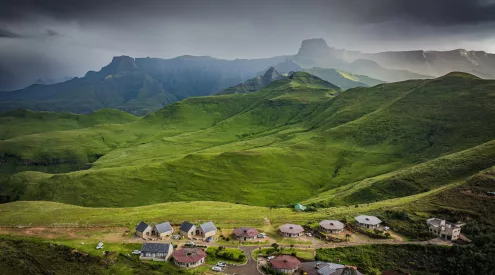Over 40 pilot whales became stranded on Farewell Spit, a stretch of coastline on the South Island of New Zealand on Monday, February 22.
Conservationists and volunteers rushed to keep the whales alive until the tide could allow for them to return to the ocean. According to the Evening Standard, some 200 people stayed with the whales in the shallow waters, keeping them wet and slowly moving them deeper while forming a barrier to try and prevent them from stranding again.
Several boats were involved in creating a barrier between the whales and the shore too.
However, on Tuesday morning, February 23 dozens of whales were found stranded once more, with 28 still alive but 15 dead.
‘We’ve been in the water pretty much since the first light … Now we’re losing the tide really quickly, and the real risk is the ones that are in the shallows now,’ Karen Stockin, director of the Cetacean Ecology Research Group told The Guardian.
‘We’re needing to be prepared for the possibility that there will be a re-stranding of the 28 [alive], based on the tide going out.’
The volunteers added that even when the water was deep enough for the whales to swim back out, they did not. This strip on the coastline is notorious for whale and dolphin strandings and scientists are yet to confirm the exact reason for the animals swimming out onto the sand.
Take a look at the rescue operation currently underway.
In pictures: Over a dozen pilot whales die and many others remain stranded near a narrow sand spit in New Zealand’s South Island
Read more here: https://t.co/yU5HsfEoKX pic.twitter.com/qOqVRQqIkj
— TRT World (@trtworld) February 23, 2021
ABC: SWIM FREE: Over 200 volunteers join forces to save 40 stranded pilot whales on a remote beach in New Zealand. https://t.co/1nLoCbHr2y pic.twitter.com/G9H9g71uGn
— Rameek Sims (@rameeksims) February 23, 2021
Picture: Wikimedia Commons/Not related


















